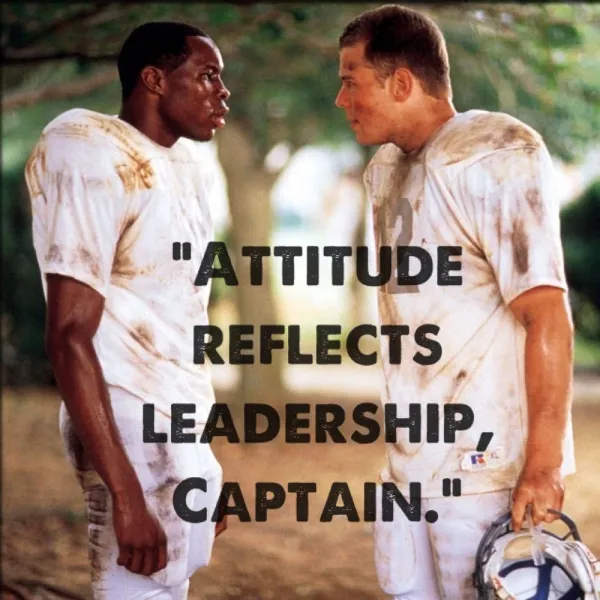Have you ever walked into a store to buy some product you needed, only to be incredibly disappointed with the service you experienced? Yeah, me too. In fact, this happens every single time I walk into my local big box hardware store.
I generally find the product I want, but I also leave feeling dissatisfied. More and more often, the sour experience I have in the store compels me to drive the extra ten minutes to a smaller local store where the staff actually seem to care.
I’ll bet that you’ve had similar experiences yourself.
In the previous issue, I argued that you should stop competing on price and that you should compete on product and service instead. Today, I want to convince you that the two are actually different sides of the same coin.
The experience is the product
From your customers’ perspectives, there is almost no distinction between the product you provide and the service you provide. Their experience is the sum of the service and the product.
And while the entire experience is important, the first and final portions of that experience are perhaps the most critical. The first experience your customers have with your business establishes the lens they will view all future interactions through. And the final impression determines their perception of the overall experience… and whether or not they’ll want more.
It does not matter what your business is. I don’t care if you’re in online retail, carpet cleaning, financial services, or real estate - the experience you provide is the product you provide. And this is the key to differentiating yourself in the market today. Customers almost never consciously distinguish between product and service.
You must provide a stellar experience
Providing an absolutely killer experience is actually a lot simpler than it sounds. A vast majority of the experience is behavioral - the human element you and your team bring to every single customer interaction.
To illustrate this, let’s talk about a small pest control company that provides residential services. I want you to imagine that you own this pest control company and that you have a small team: one office manager, two technicians, and of course you.
Let’s think about some of the bare-bones experiences your customers would probably have along the way. (By the way, in product speak, this range of experiences is called the “customer journey”.)
- They hear about your service from a friend who also happens to be your customer.
- They do a Google search to learn more about your company.
- They check out your website to learn more about the services you provide.
- They submit a form on your site or they make a phone call to the number you’ve listed.
- They eventually decide to schedule a service appointment with you.
- On their first appointment day/time the assigned technician (or you) arrives.
- Your technician (or you) provides the needed service.
- The customer receives an invoice for the service.
Now, let’s say these are the only experience touch points along the customer journey. (Side note: if these are the only touch points along the customer journey, you have a massive amount of untapped potential for dramatically improving how you serve your customers…)
The details of how your customer experiences each of these touch points are absolutely critical to how your product and your company will be perceived. Remember, the experience is the product.
If you’re going to provide a stellar experience, then every single one of these interactions is incredibly important, especially if you’re not going to compete on price (i.e. you’re not going to be the least expensive option). Let’s briefly examine each of those interactions with some questions.
- They hear about your service from a friend who also happens to be your customer.
- What does the friend say about your company? Is it positive? How did your current customer come to form their opinion? (Hint: everything below is the answer.)
- They do a Google search to learn more about your company.
- Do you show up in the Google local listings? Are the reviews positive? Does your listing look professional, or slopped together?
- Do you even have a website they can click through to?
- They check out your website to learn more about the services you provide.
- Does your website look like something that came straight out of the 90s?
- Do you talk about yourself, or do you talk about the problem your potential customer is experiencing?
- Does your customer get the impression that you care about their problem and that you have the solution to their problem?
- Do you have a clear call to action, or is the customer confused about what they should do next?
- Do you have a way to pursue the customer over time? What if they’re not ready to make a decision today?
- They submit a form on your site or they make a phone call to the number you’ve listed. This is the first opportunity for human interaction with your business.
- If they submitted a form:
- do they hear back from you quickly?
- do they get a personal phone call? Is the caller warm, friendly, and cordial?
- If they call your number:
- do they actually get to talk to someone? Or do they have to leave a voicemail?
- if they talk to someone, is that person warm, friendly, and cordial?
- does the person they interact with ask lots of questions to better understand this particular customer’s needs?
- If they submitted a form:
- They eventually decide to schedule a service appointment with you.
- Does your customer get a call/text/email confirming their appointment?
- Do you send your customer a calendar invite for the time of their appointment?
- On their first appointment day/time the assigned technician (or you) arrives.
- Does your technician actually arrive on time? If not, did they proactively communicate with the customer to let them know they’d be late?
- Do they drive up in a dirty truck? (Please note: I did not say “new” truck. Customers don’t care how old your fleet is, but they might care to see that it’s well cared for and clean.)
- Does your tech look clean, professional, and put together? Or does he look like he just rolled out of bed?
- Does your tech ring the doorbell and then take a few big steps back? Or does he stand menacingly close to the door?
- Does your tech know the customer’s name?
- Does your tech actually take the time to (again) ask questions to better understand the customer’s problem that led to them calling in the first place?
- Does your tech take the time to explain what they’ll be doing to help solve the problem? Do they check to see if the customer has any questions?
- Your technician (or you) provides the needed service.
- Is your tech respectful of the customer’s home and property?
- If they have to go inside, does your tech put booties on (regardless of what the customer’s home looks like)?
- Does someone from your business follow up a couple of days later to see if the problem has been resolved and to see if the customer is satisfied and happy?
- The customer receives an invoice for the service.
- Do you include, along with the invoice, an explanation of the services rendered and remind the customer that their satisfaction is your top concern?
- Do you thank them for their business and remind them that your business is the best solution for future problems?
- Is the invoice easy to pay? Do they have to mail in a check with their own stamp? Can they pay online? Can they set up recurring payments?
- Bonus: your technician (or you) stops at the grocery store on the way home from work, still wearing their work uniform.
- NOTE: I promise you this actually matters. I cannot tell you how many different companies I have literally decided never to call standing right there in the grocery line because of how one of their employees (evidenced by their uniform/shirt) presented themself. I guarantee I am not the only one.
- When they pulled into the parking lot driving one of your trucks, were they driving like a jerk? Or were they respectful and considerate?
- As they walk through the store, are they using foul language? Are they cordial with other shoppers?
- When they’re standing in line are they cordial and friendly to the people in front of or behind them? Again, this matters! There is a plumbing company in my town that potentially earned my business in the grocery store when one of their techs got down on his knees to chat with one of my children while we waited in line.
Alright, that was a long list, although it certainly is not exhaustive. But it’s enough to illustrate the point - the experience is the product. Your team, whether you have one employee or twenty, represents you and your business.
And it is the sum total of those experiences that build a whole picture for your customers. If their first interaction with your business isn’t delightful, they probably won’t talk to you again. If their last experience with you doesn’t complete the journey well, they probably won’t do business with you again.
It starts with you

Hopefully, this is obvious, but this has to start at the very top, with you. Leadership rolls downhill.
If you’re not modeling excellent service at every corner, you can’t possibly expect the people who work for you to do any better.
One of the best ways to do this with your team is to enroll them in the mission. If your team understands why the service you provide matters and exactly what they’re expected to do, they will accomplish amazing things for your business.
And if you’ve led by example, enrolled your team in a mission that matters, and been clear on what you expect then you have to demand excellence and hold them accountable.
How this will make you money
Remember, the experience is the product. If you examine the entire customer journey with a critical eye, you’ll probably find some areas to improve on.
When your business provides an excellent product and amazing service, you have started to differentiate on something other than price. Which means you can (and should) charge more. Your business will build a reputation for high quality and high value.
Not only this, but if you have a team that is enrolled in the mission, then your business is starting to scale beyond you! Your brand and your company are inherently more valuable because it is becoming less dependent on you for day-to-day operations.
And that means you have more time to focus on other ways to optimize and grow your business.
To thriving,
Zach
PS: If you want help with examining your current customer journey and identifying ways to improve the experience (remember: the experience is the product), set up a free call!




